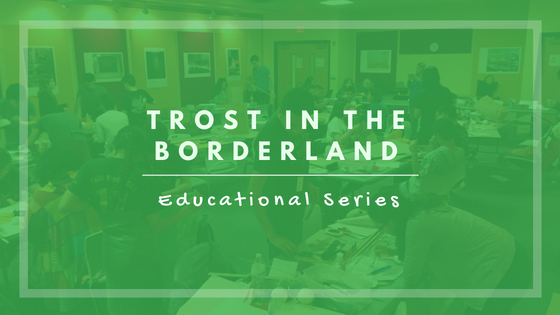he “Trost in the Borderlands: Life Cycle of a Building” educational series aims to
educate 7th and 8th grade students attending school in El Paso about the value of
preserving historic buildings in their community through a two-day workshop hosted in
partnership with Adventures in Learning (AIL) and FabLab El Paso (FLEP). We hope to teach
students that by understanding the history of their neighborhood, they can begin to develop a
vision for their community that fits the needs of their residents, is sustainable over the long-term,
and ties their unique culture to the overall history of the city.
The Trost in the Borderlands project will empower young El Pasoans attending middle
school within a 5-mile radius of downtown El Paso to actively participate in their city’s
development by helping them to think critically about how the built environment impacts their
quality of life. The project makes the process of historic preservation and learning about history
accessible to students by using fun and exciting technology to build their own version of a
historic downtown. These activities will also promote children’s exposure to STEAM and help
raise their interest in careers such as engineering and architecture, providing them with skills that
can later be re-applied back into their community. The Texas Trost Society has partnered with
two organizations that work exclusively with young students to create highly successful and
creative programs that help students learn about science, technology, and culture.
The program seeks to make history relevant for young adults by employing modern
technology to help them create a new narrative for El Paso’s future while utilizing architectural
artifacts from the city’s past. The workshop will begin with a walking tour of Downtown El Paso
with the Trost Society that reviews several architectural types as well as the city’s early history.
We will head over to FLEP, where students will learn to use a laser cutter to create pre-designed
templates of key historic buildings out of recycled cardboard that are 12″ high. Students will then
learn how to create 3- D scans of buildings to develop 3-D design elements to decorate their
buildings. Next, students will work with AIL to assemble their buildings, write a short
“historical” background, decide on their building’s new use, and learn about the sustainability of
their project. Once student teams are ready, they will come together to merge their buildings into
one city.
At the end of the tour, students will have learned about the most iconic examples of
architecture located just a short walking distance from their school and the history of El Paso’s
origins. After their time with Fab Lab, they will have reviewed four important topics concerning
the reinterpretation of historic buildings for modern use: understanding structural engineering
and architectural blueprints; aesthetic touches and cultural significance of exterior designs; how
to leverage technology for preservation; and modern interpretation of historic buildings for
mixed use by local communities. Finally, students working with Adventures in Learning will
incorporate sustainability, ease of access to services, and a reinterpreted history to create their
own livable city-scape.
